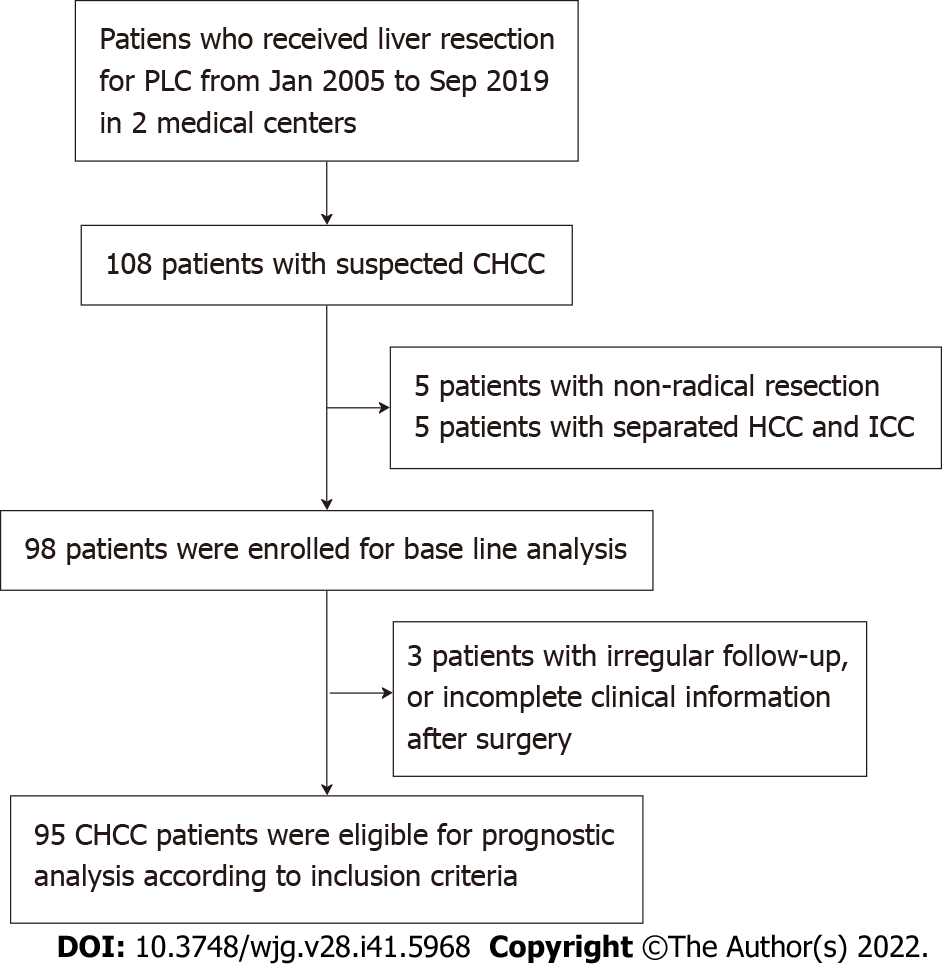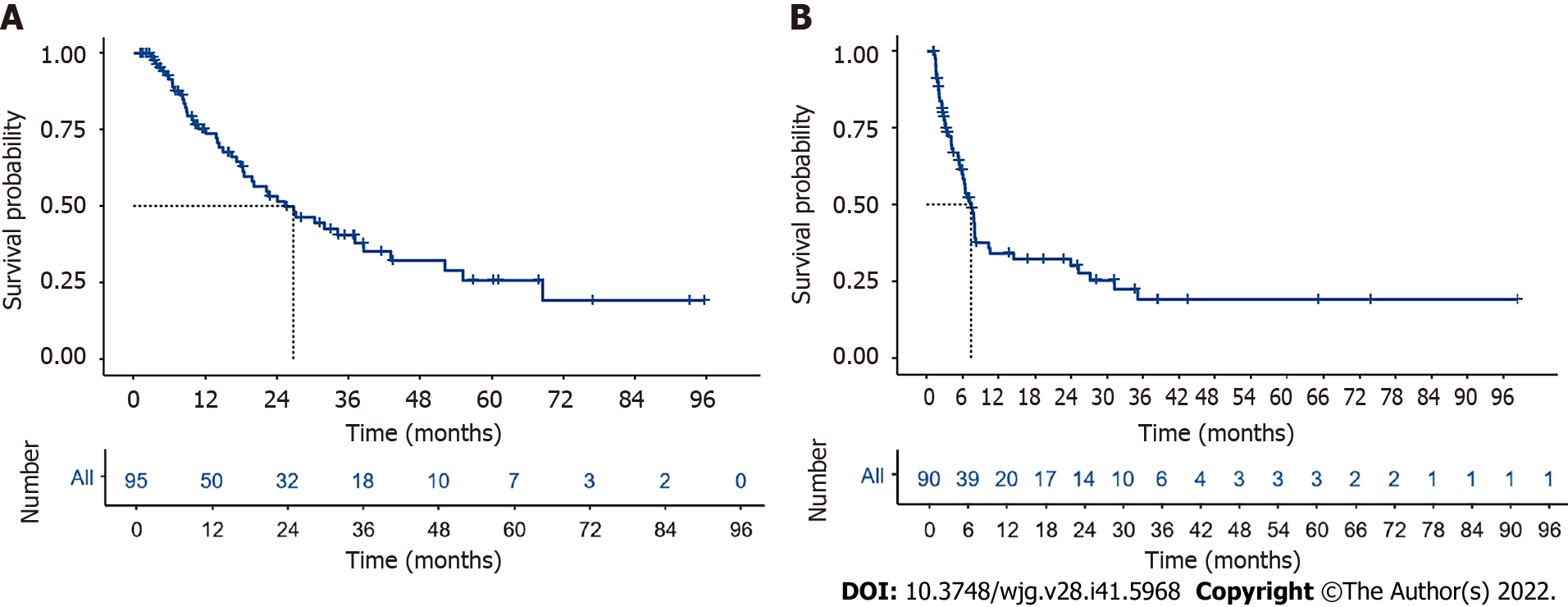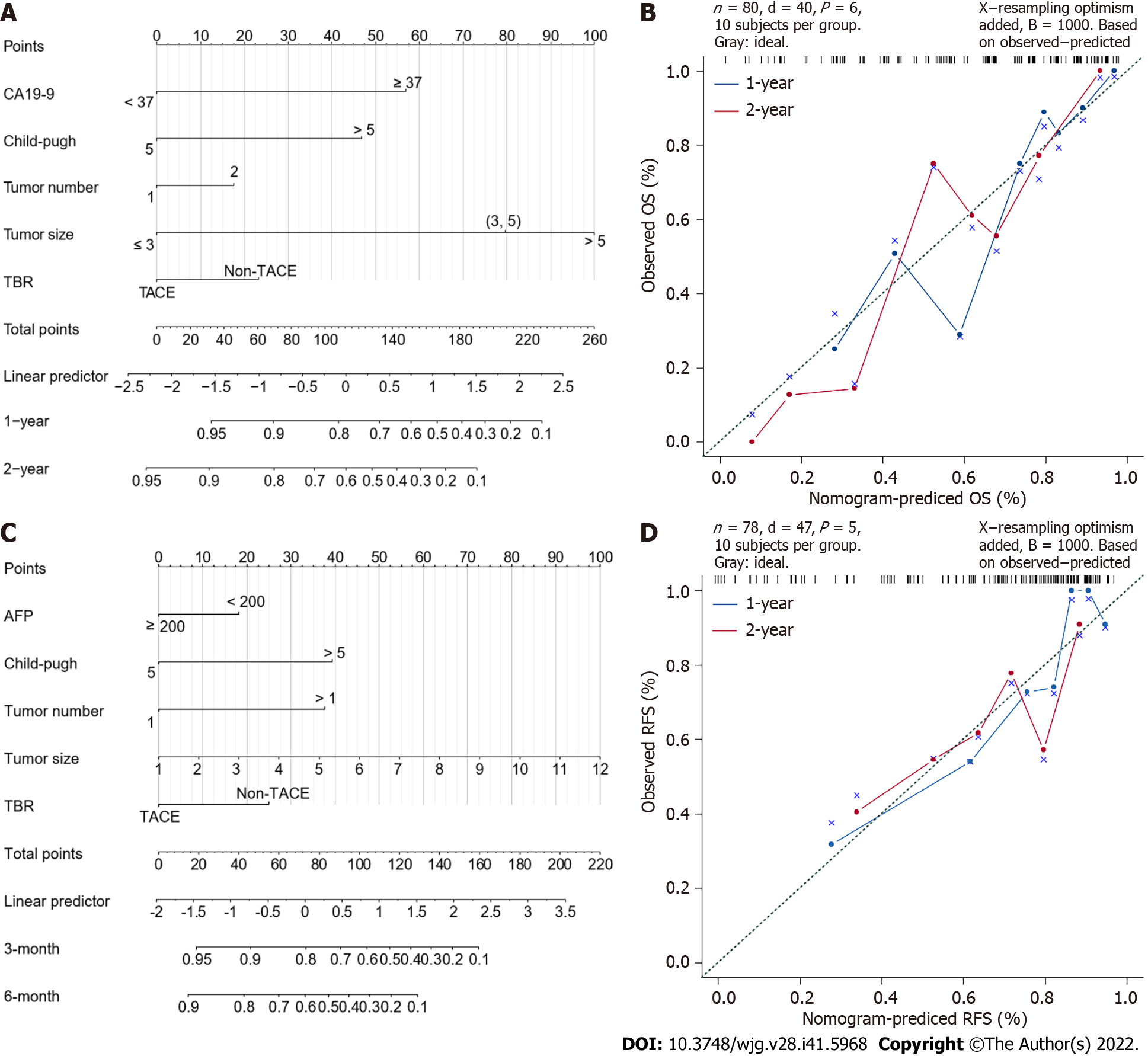Copyright
©The Author(s) 2022.
World J Gastroenterol. Nov 7, 2022; 28(41): 5968-5981
Published online Nov 7, 2022. doi: 10.3748/wjg.v28.i41.5968
Published online Nov 7, 2022. doi: 10.3748/wjg.v28.i41.5968
Figure 1 Research framework of this study.
Figure 2 Survival and recurrence in patients after radical resection.
A and B: Overall survival (A) and recurrence-free survival (B) curves of patients with combined hepatocellular-cholangiocarcinoma from two medical centers.
Figure 3 Prognostic analysis between different subgroups.
A-D: Overall survival between patients with different Child-Pugh (C-P) score ( > 5 vs 5) (A), CA19-9 Level ( ≥ 37 U/mL vs < 37 U/mL) (B), tumor size ( > 5 cm vs ≤ 5 cm) (C) and tumor size (≤ 3 cm vs 3-5 cm vs > 5 cm) (D).
Figure 4 Multivariate analysis of all patients on overall survival and recurrence-free survival.
A: Overall survival; B: Recurrence-free survival. C-P: Child-Pugh; Micro VI: Microvascular invasion; GPC-3: Glypican-3; TACE: Transarterial chemoembolization.
Figure 5 Nomogram for overall survival and recurrence-free survival.
A: Overall survival (OS) nomogram for patients with combined hepatocellular-cholangiocarcinoma (cHCC-CCA); B: Calibration curve of overall survival for 1- and 2-year OS; C: Recurrence-free survival (RFS) nomogram for patients with cHCC-CCA; D: Calibration curve of recurrence-free survival for 3-mo and 6-mo RFS. OS: Overall survival; RFS: Recurrence-free survival; TBR: Treatment before recurrence; AFP: Alpha-fetoprotein.
- Citation: Zhang G, Chen BW, Yang XB, Wang HY, Yang X, Xie FC, Chen XQ, Yu LX, Shi J, Lu YY, Zhao HT. Prognostic analysis of patients with combined hepatocellular-cholangiocarcinoma after radical resection: A retrospective multicenter cohort study. World J Gastroenterol 2022; 28(41): 5968-5981
- URL: https://www.wjgnet.com/1007-9327/full/v28/i41/5968.htm
- DOI: https://dx.doi.org/10.3748/wjg.v28.i41.5968













